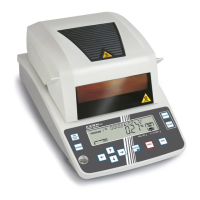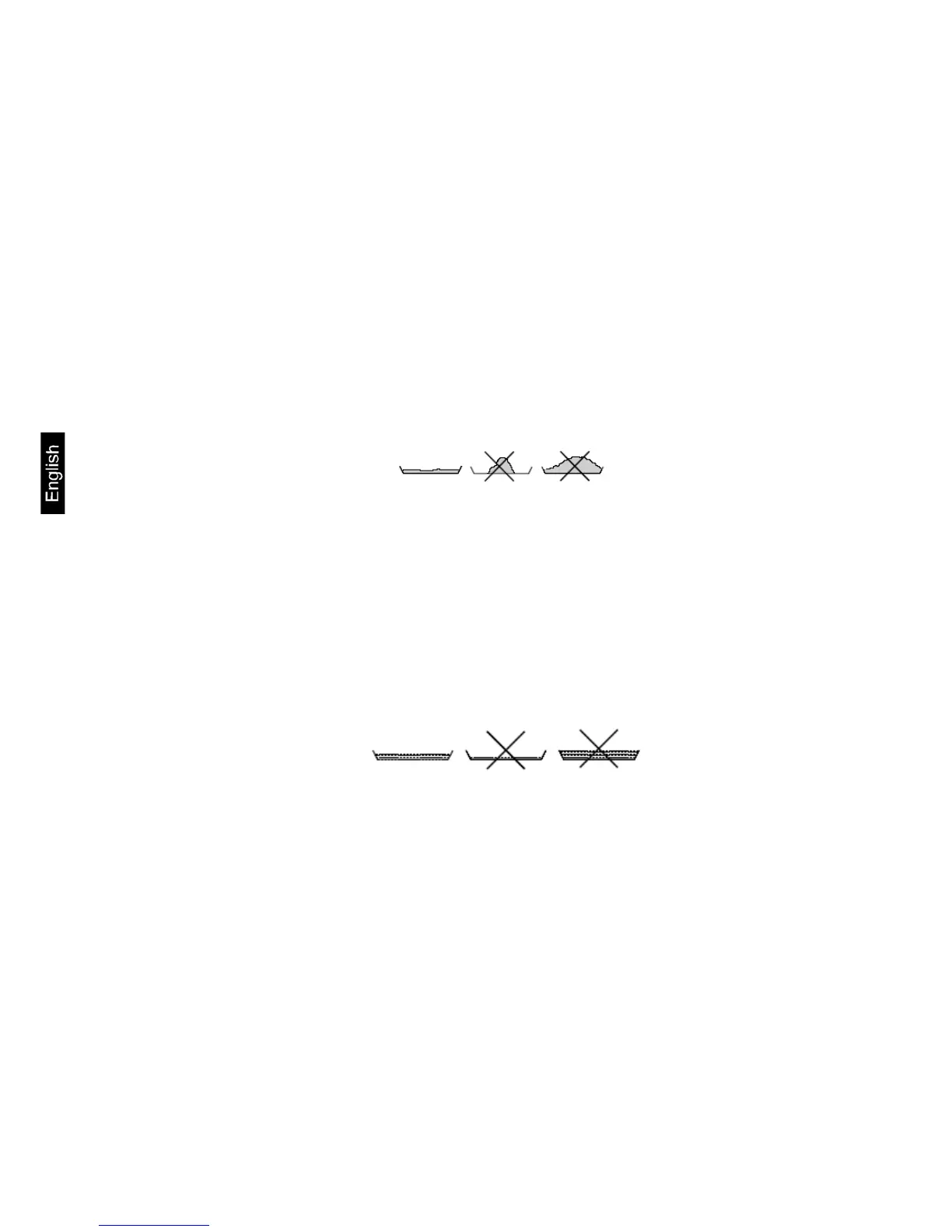76 DBS-BA-e-1311
12.4 Preparing a sample
Prepare one sample at a time for measuring. This prevents the sample from
exchanging moisture with its surroundings. If several samples have to be taken at the
same time, they should be packed in airtight boxes so that they do not undergo
changes during storage.
To receive reproducible results, spread the sample thinly and evenly on a sample
dish.
Patchy spreads will produce inhomogeneous heat distribution in the sample to be
dried resulting in incomplete drying and increased measuring time. Sample clusters
generate increased heating of the upper layers resulting in combustion or
incrustation. The high layer thickness or possibly arising incrustation makes it
impossible for the moisture to escape from the sample. Due to this residual moisture,
measured results calculated in this way will not be comprehensible or reproducible.
• Spread powdery or grainy samples evenly on the sample dish.
• Grind coarse samples using a mortar or a shredder. When grinding the sample avoid
any heat supply as this may cause loss of humidity.
Preparing a sample from liquids:
For liquids, pastes or melting samples we recommend to use a glass fiber filter. The glass
fiber filter has the following advantages:
• Even distribution thanks to capillary attraction
• no formation of droplets

